Time and Place Is What You Make It, as This Japanese-Inspired Apartment in Brazil Proves
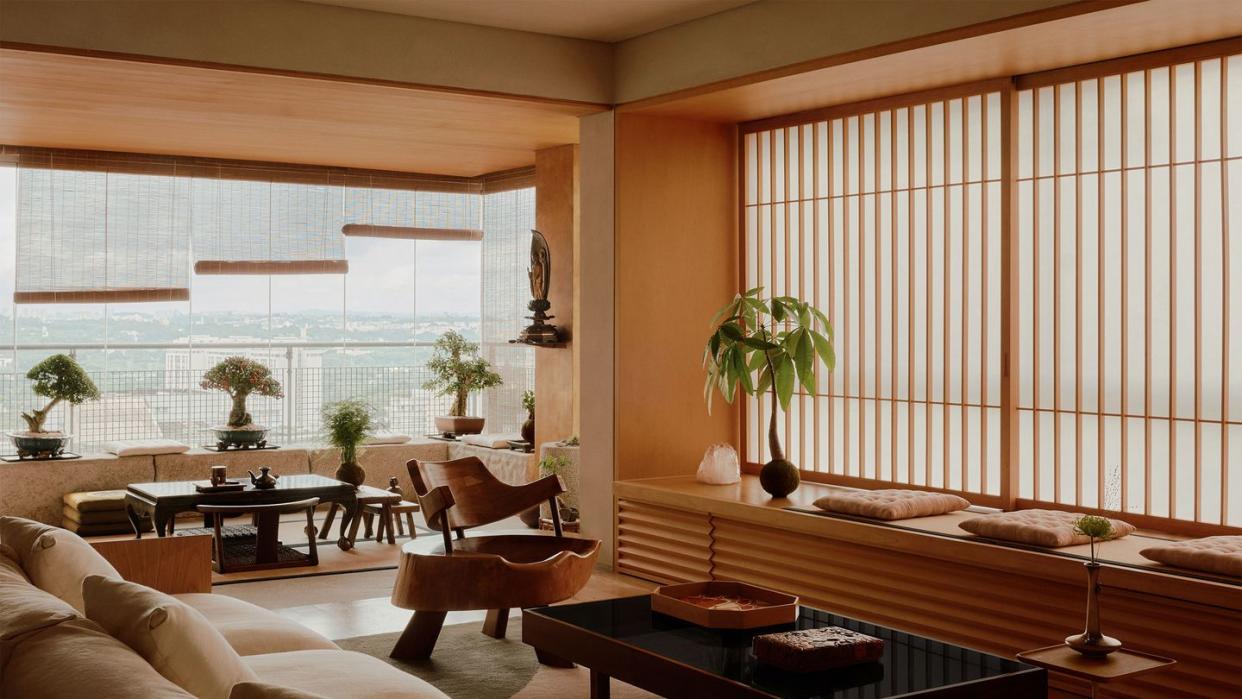
If you want a glimpse into the mind of Silvia Furmanovich, just look at one of her earrings. The Brazilian-born jeweler is known for the richness of her designs and the vastness of her inspirations: a necklace from her Egypt collection with the carved lapis she found in a Cairo market; the suzani fabrics sourced on the Silk Road woven into a cuff; the ancient Japanese basketwork that shows up in a pendant; her signature wood marquetry created in collaboration with artisans in the Amazon. “My jewelry is a cross-pollination of traditions,” Furmanovich has said. “I love discovering crafts in faraway places that I can show in a contemporary way.” This search means she is on the road almost every month, a schedule that for the designer has redefined the comforts of home.
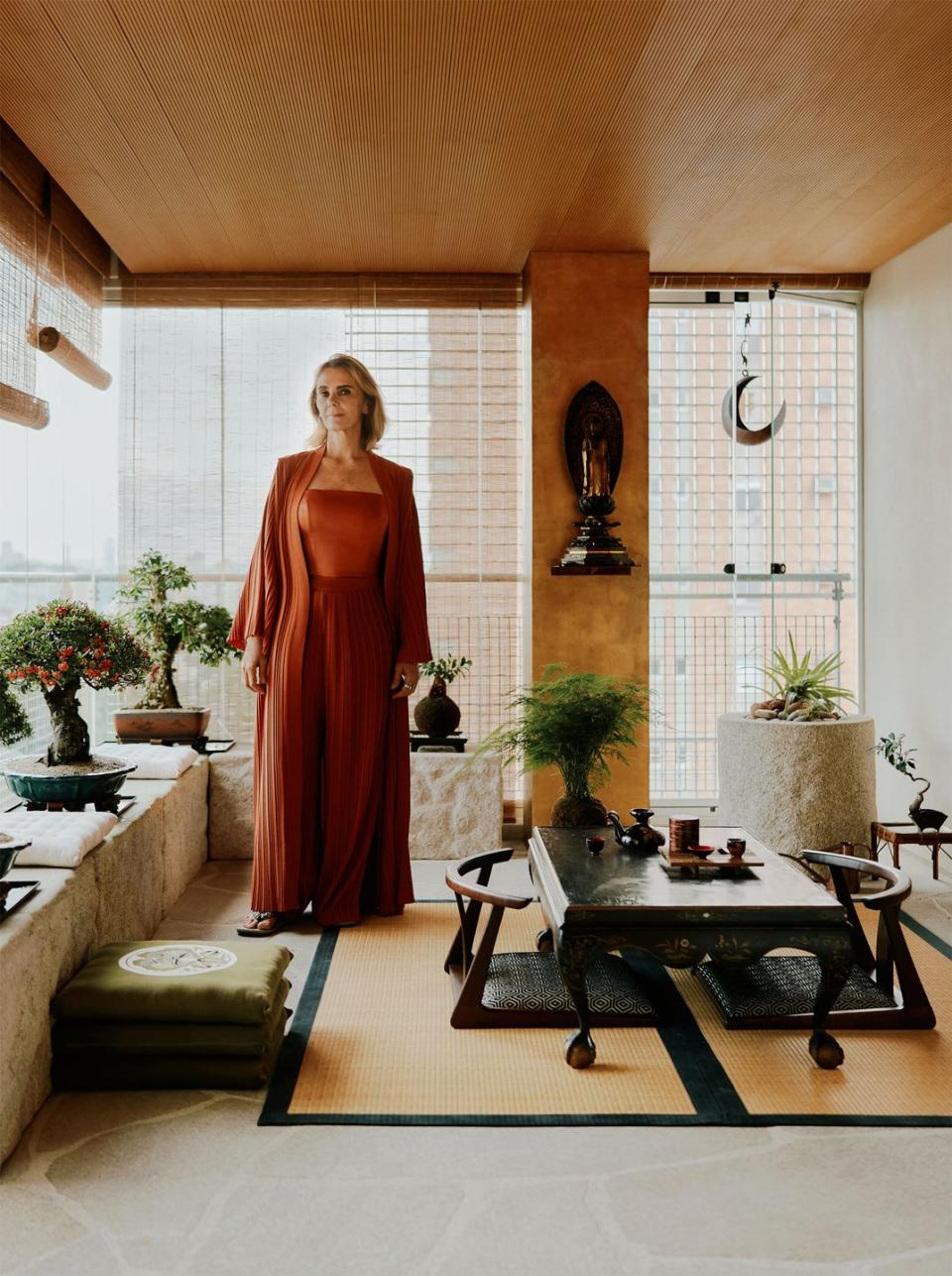
When she moved into her apartment with soaring views of São Paulo three years ago, she decided to embrace her need for silence—and change everything. “I took all the things I had lived with in the past and brought them to my office,” she says. “I wanted a place where my mind could rest. I can meditate and imagine here.” The serenity and connection she experienced on a trip to Japan gave her a sense of design grounding. She says that on her first day in Tokyo she felt rooted to something there. “I have no idea why,” she says. “I have always lived with a strong Italian influence.”
Foyer
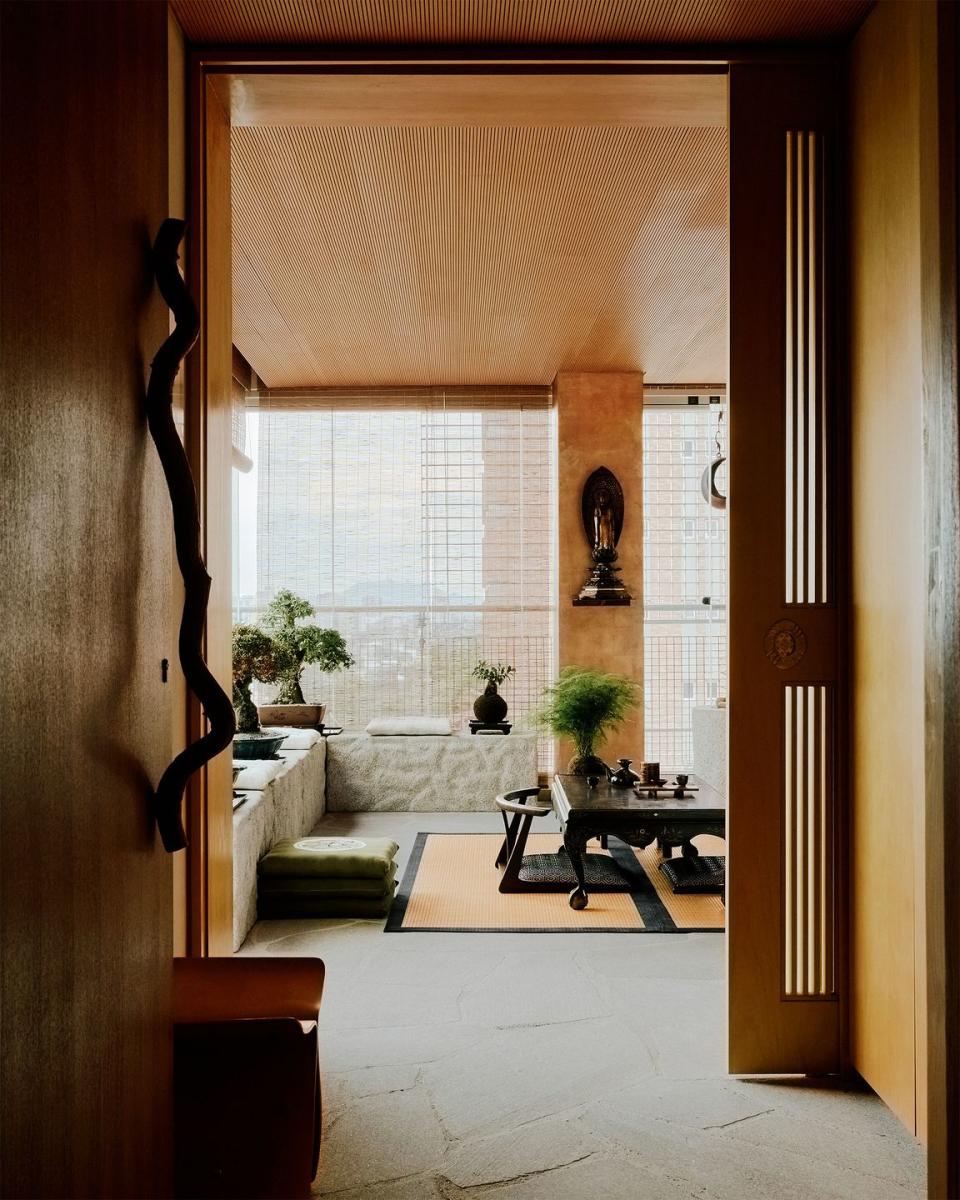
In the foyer of Silvia Furmanovich’s high-rise apartment in São Paulo, which she designed with architect Ana Terra Capobianco, a Balinese vine serves as a door handle. The custom sliding wood door has a vintage brass handle.
Living Room
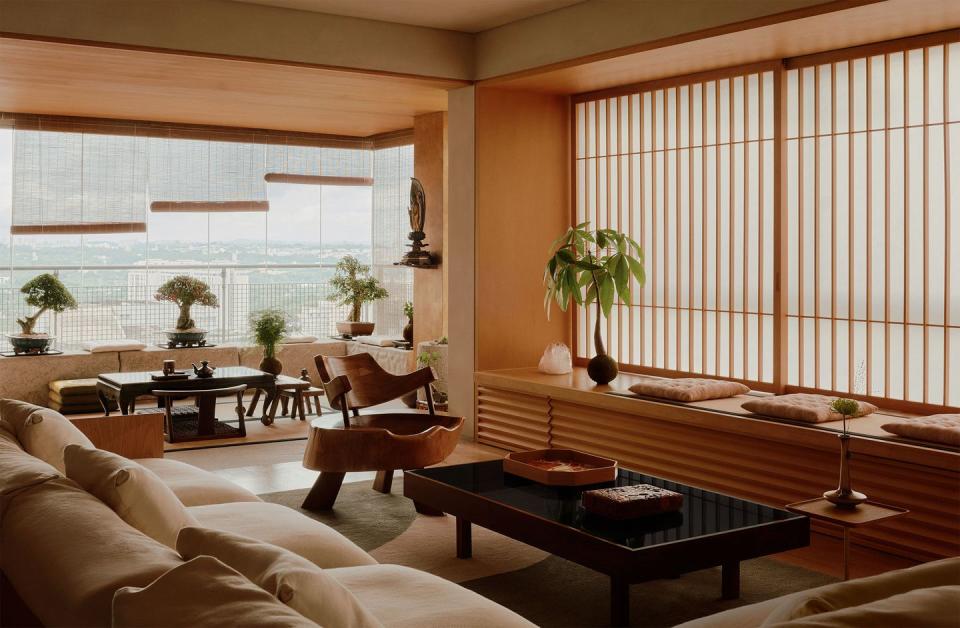
The sofa and side table are by Jader Almeida and the vintage cocktail table by Sergio Rodrigues. The custom bamboo blinds are from Kyoto, Japan.
Silvia Furmanovich
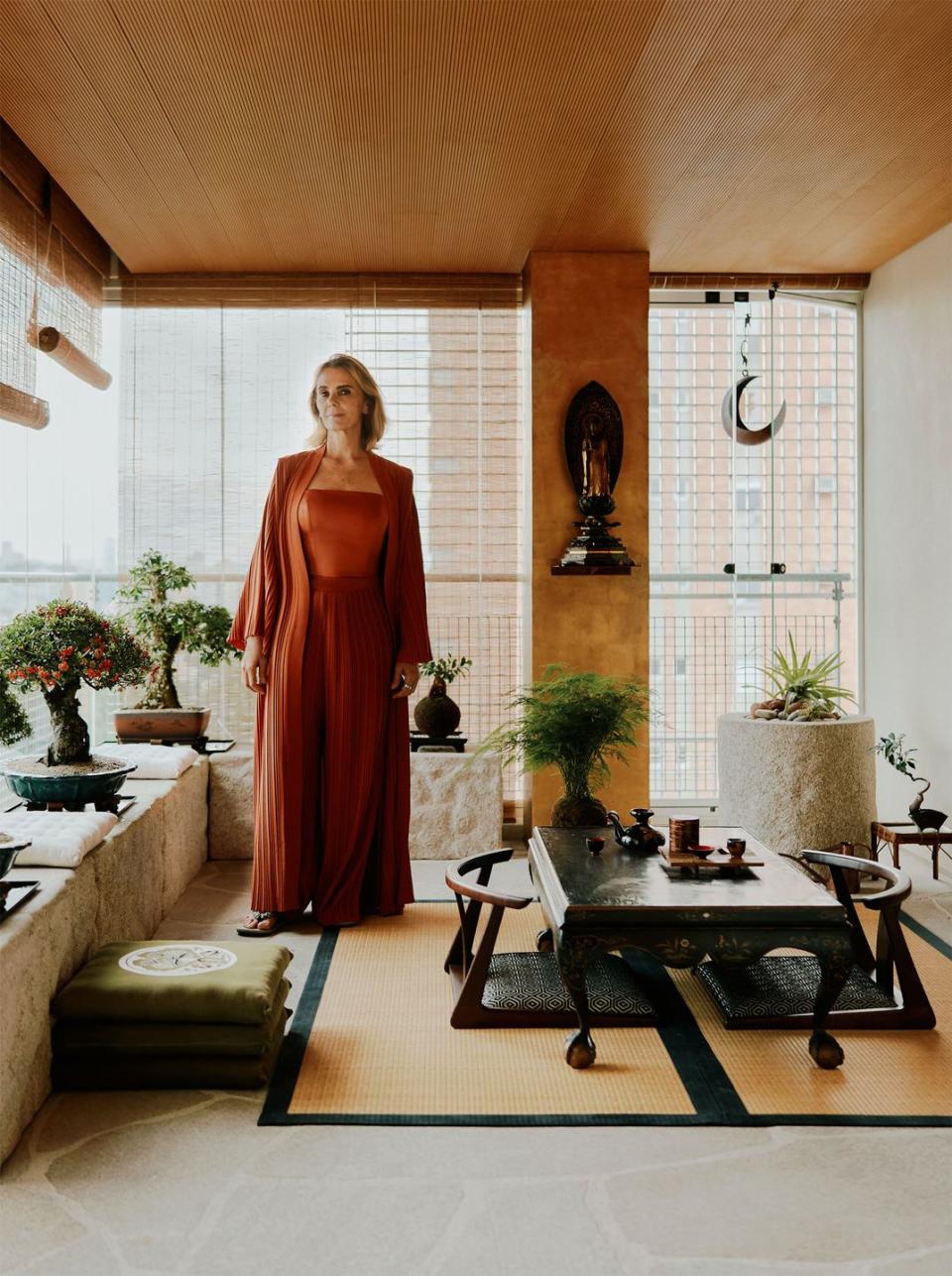
The jewelry designer in her living room, where bonsai trees are lined up on a custom granite bench. The Japanese cocktail table is from the 19th century, and the low chairs are by Morito Ebine.
Living Room
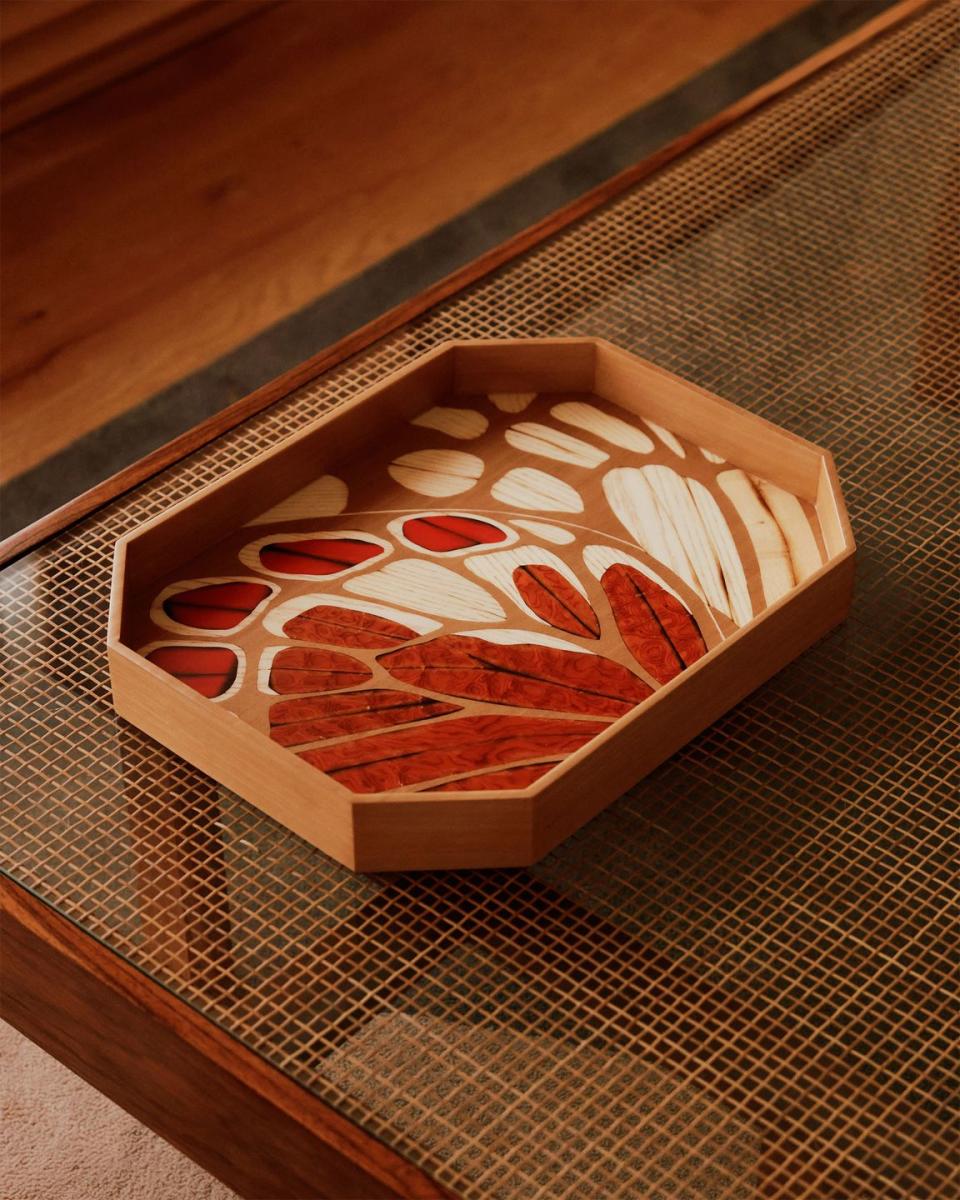
Furmanovich also makes decorative objects like this marquetry tray resembling a butterfly wing, which rests on a vintage Sergio Rodrigues cocktail table.
Dining Room
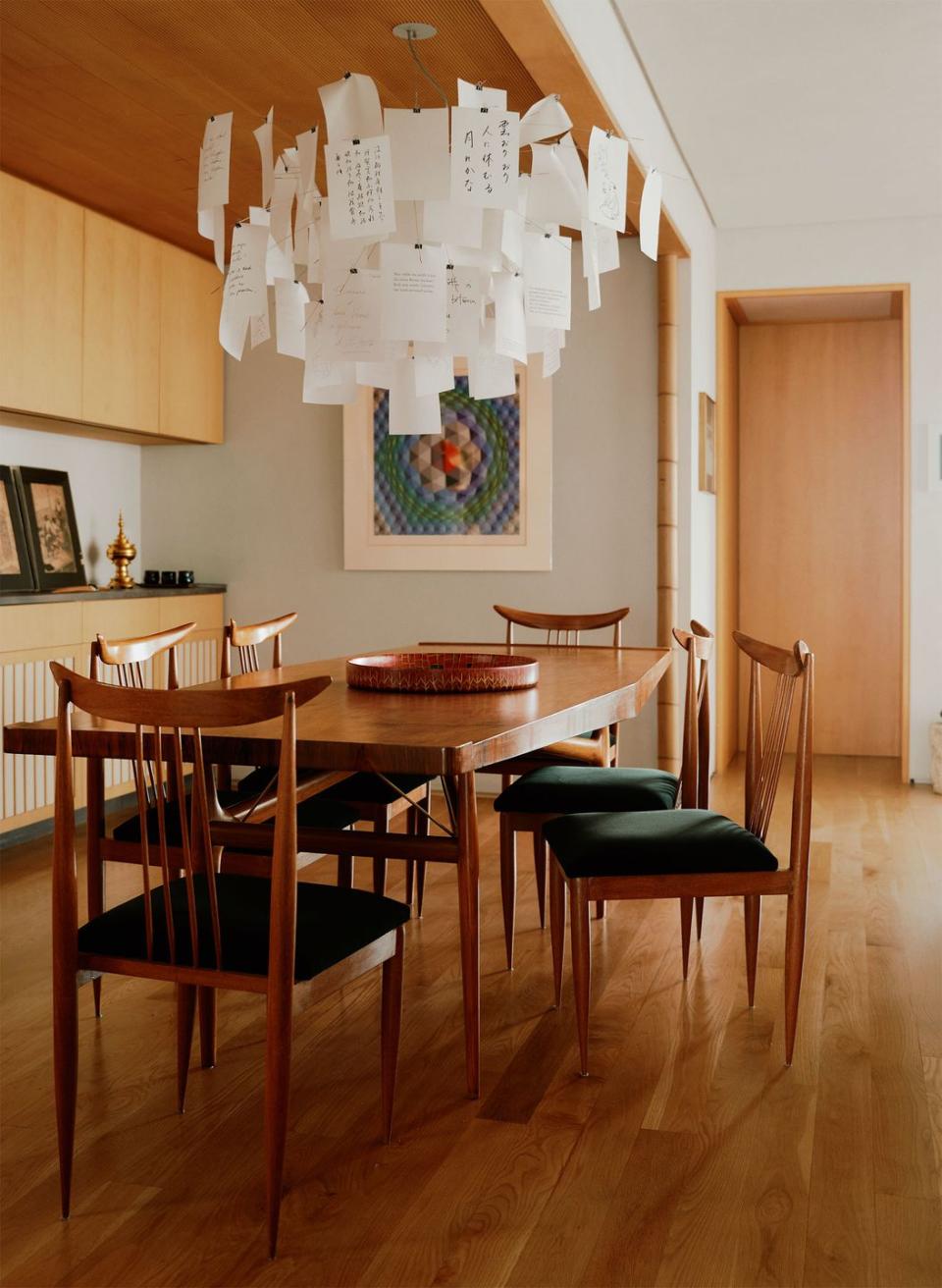
An Ingo Maurer paper chandelier hangs over a vintage Giuseppe Scapinelli table and chairs. The silk-screen artwork is by Victor Vasarely, and the woodblock prints (left) are by Kitagawa Utamaro.
Kitchen
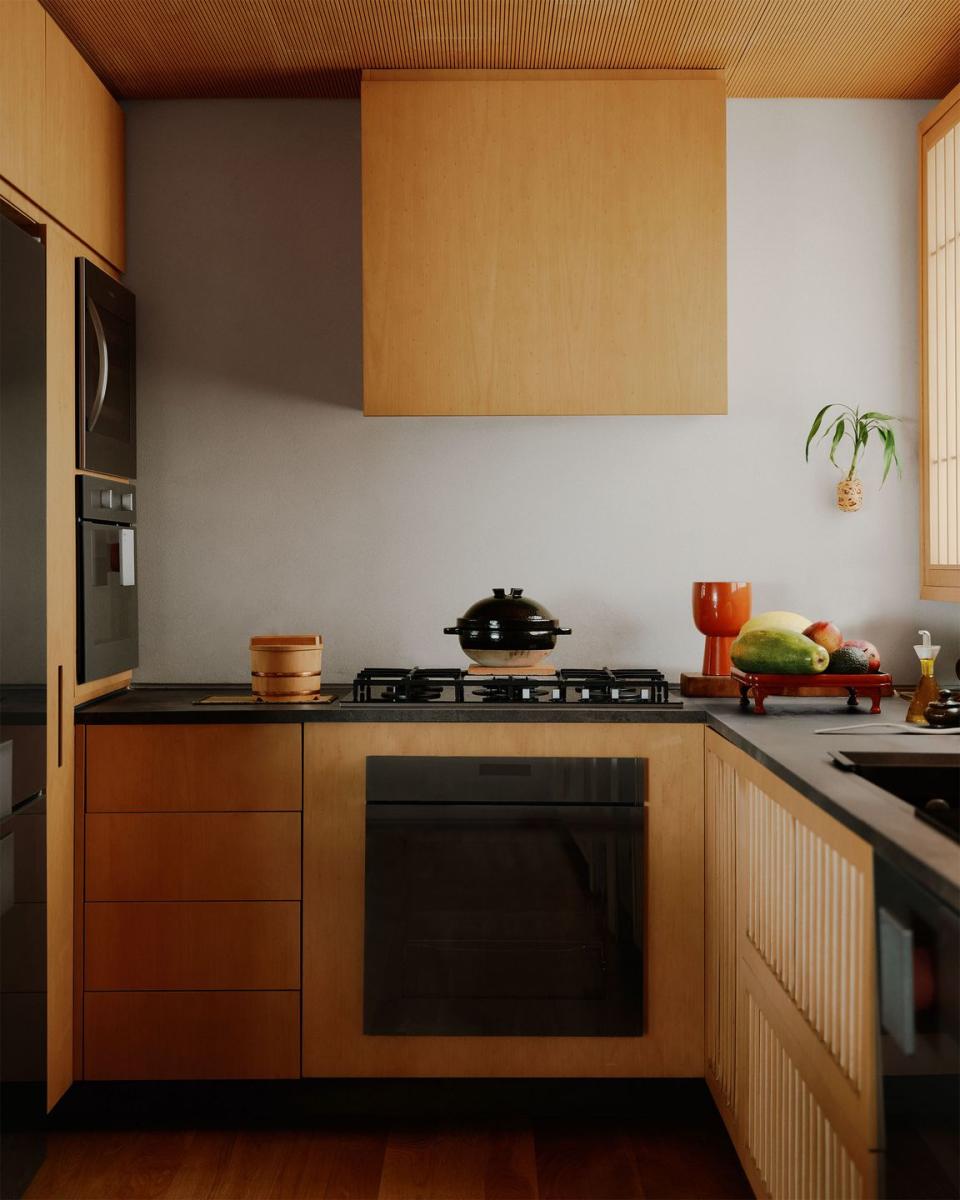
Custom wood cabinetry is paired with walls in a textured paint inspired by Japanese mud walls. The appliances are by Gorenje by Starck.
Primary Bedroom
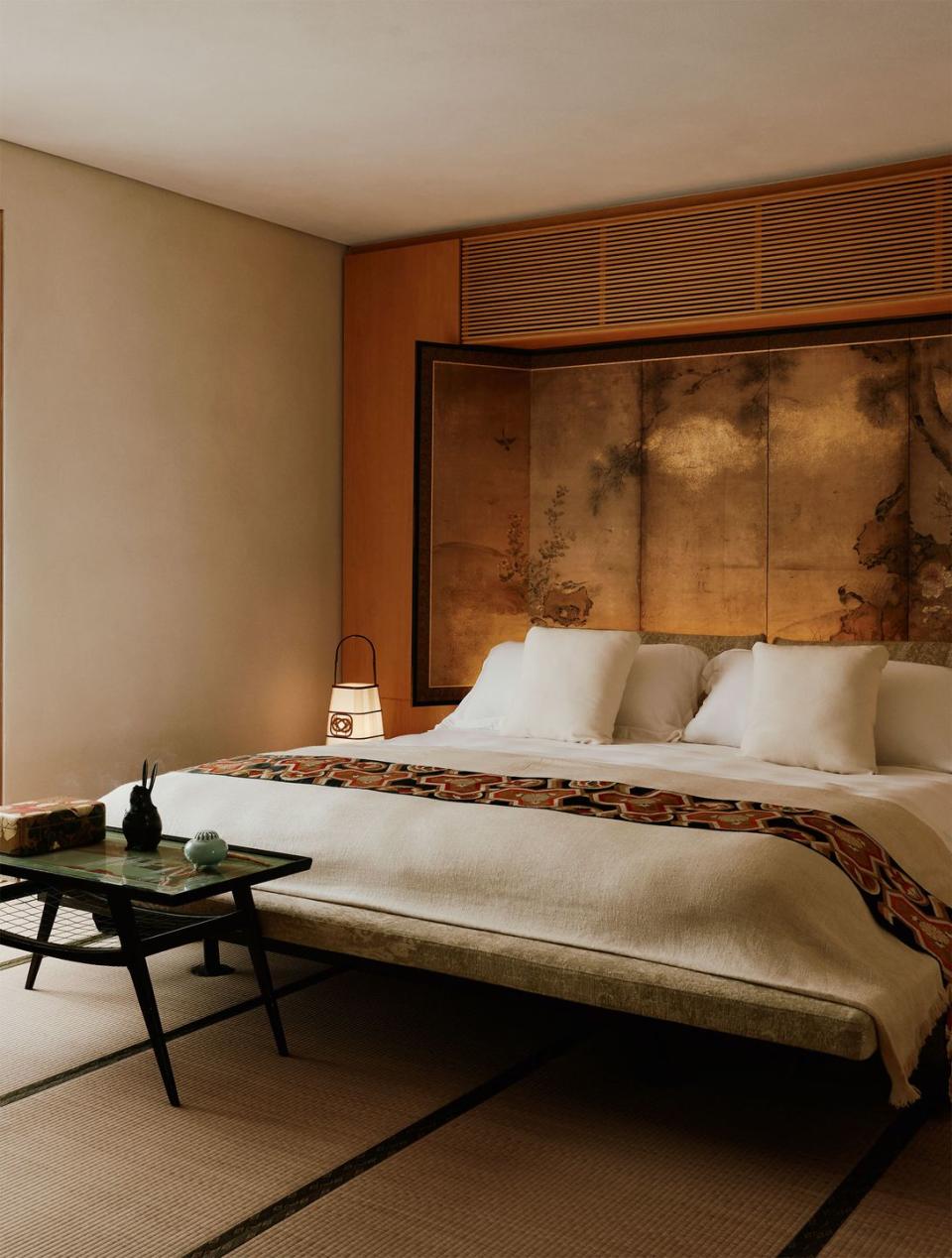
An antique Japanese screen hangs behind the bed. The bedding by Trousseau is topped with a vintage Japanese obi; the paper lamp is from Shizuoka, Japan.
Primary Bathroom
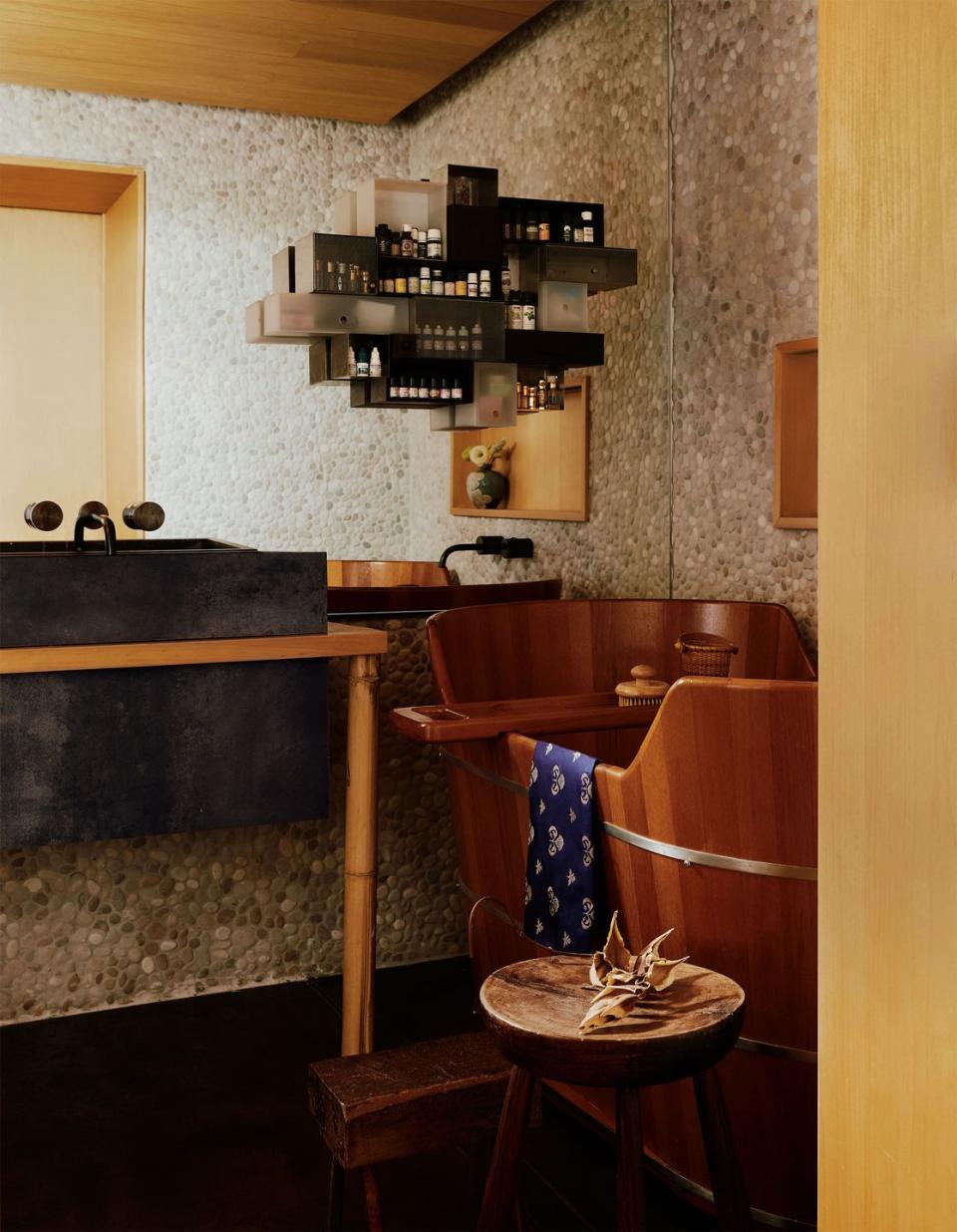
The primary bathroom has a traditional Japanese wooden ofuro tub. The mirrored wall cabinet is by Isay Weinfeld. The river-stone wall treatment and the stone, wood, and bamboo vanity are custom.
Bathroom
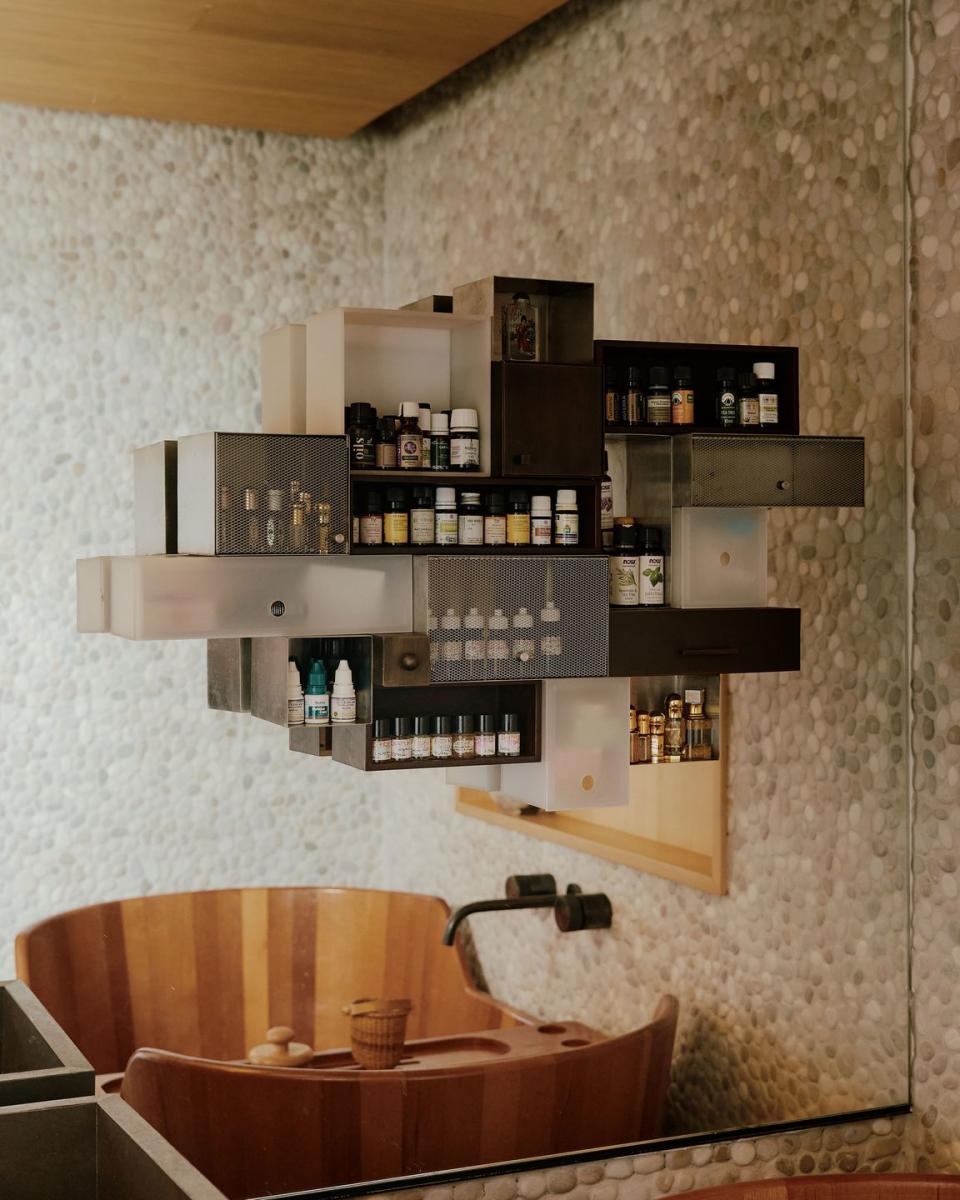
The wall shelf in the primary bathroom was designed by Brazilian architect and designer Isay Weinfeld.
Closet
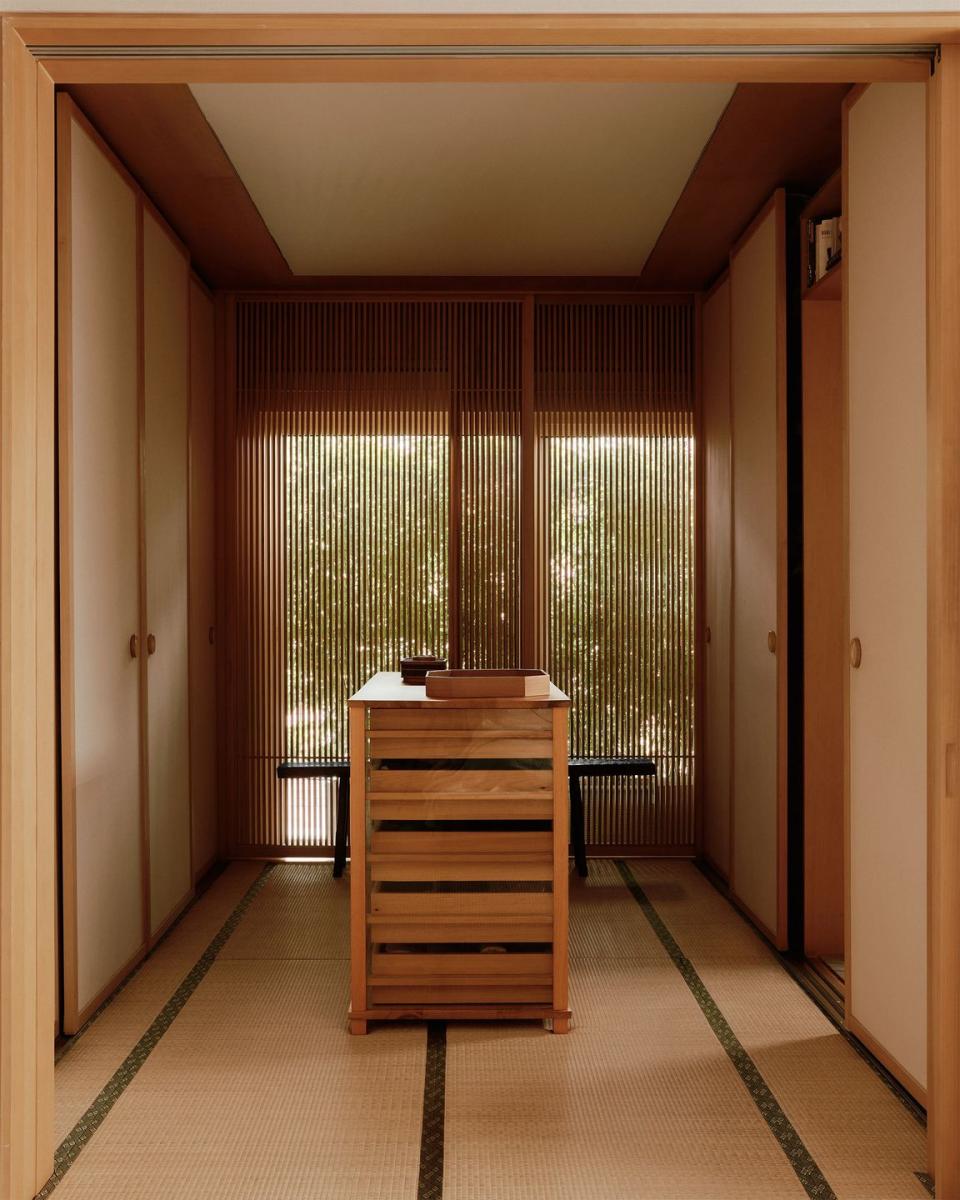
The floor is lined in tatami mats with olive silk trim. The wood and glass dresser island and the window screen are custom.
She met with several Brazilian architects who didn’t quite understand where she was headed—“‘But you are not Japanese,’ they told me. ‘What you are trying to do, it’s not Brazilian’”—until Ana Terra Capobianco, a young female architect, met her where she was at. “I gave her the references, the bamboo, the stones, the layers upon layers,” she says. “I showed her images of Benesse House Museum in Naoshima and the textures and materials I saw used there.” She also had in mind passages from the 1933 essay on Japanese aesthetics In Praise of Shadows by Jun’ichiro Tanizaki, particularly his point of view on the power of light against surfaces. The book captured an element of Japanese culture that had intrigued her, the layers that always inspired discovery, and a search for what might lie beneath.
In the São Paulo apartment, that light might hit sliding doors or shoji screens or tatami mats. The tatami, she decided during the design process, was too much to use in the full apartment, so it is now in the bedroom. “A dealer made it for me in Japan,” she says. “I love the way it feels but also its scent, like clean, dry grass.” Light might also subtly illuminate Furmanovich’s art and design collection, which includes pieces from Brazilian artists and designers like Mira Schendel, Nelson Felix, and Sergio Rodrigues, as well as Victor Vasarely, Sori Yanagi, Isamu Noguchi, and Ingo Maurer. There is a serenity to the space, but it is not devoid of objects, like the Japanese basketry, made by bamboo artisans, that Furmanovich gets at Galerie Mingei in Paris, along with bonsai trees and several pieces of lacquer acquired on her voyages.
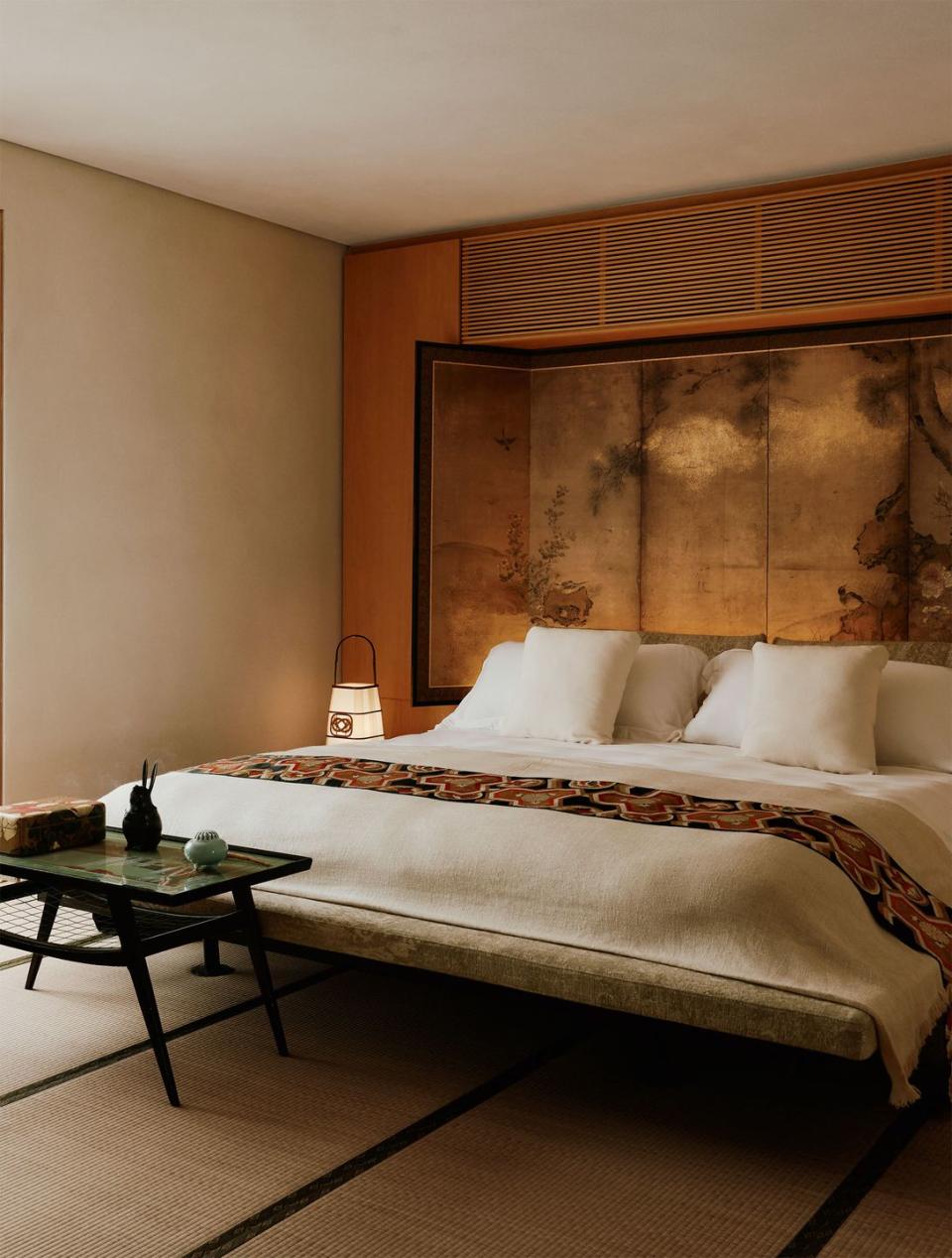
But speak to Furmanovich about the apartment, and the impact the chosen materials have on her mind and mood is clear. Two wardrobes stand at the entrance for visitors’ shoes. “This way they too can feel the wood floor in the living room, the textures beneath their feet,” she says. “And then the sofa lined with silk, which is so soft and gentle.” The bathroom is teak with several kinds of stone throughout, another place where Furmanovich believes the textures and materials influence her sense of herself. “The past three years have been incredibly exciting and incredibly busy,” she says. “The emptiness, the spareness of this space is so important for my creative process. It is a place where I can be with myself. Even if I put flowers on the table, it seems too much.”
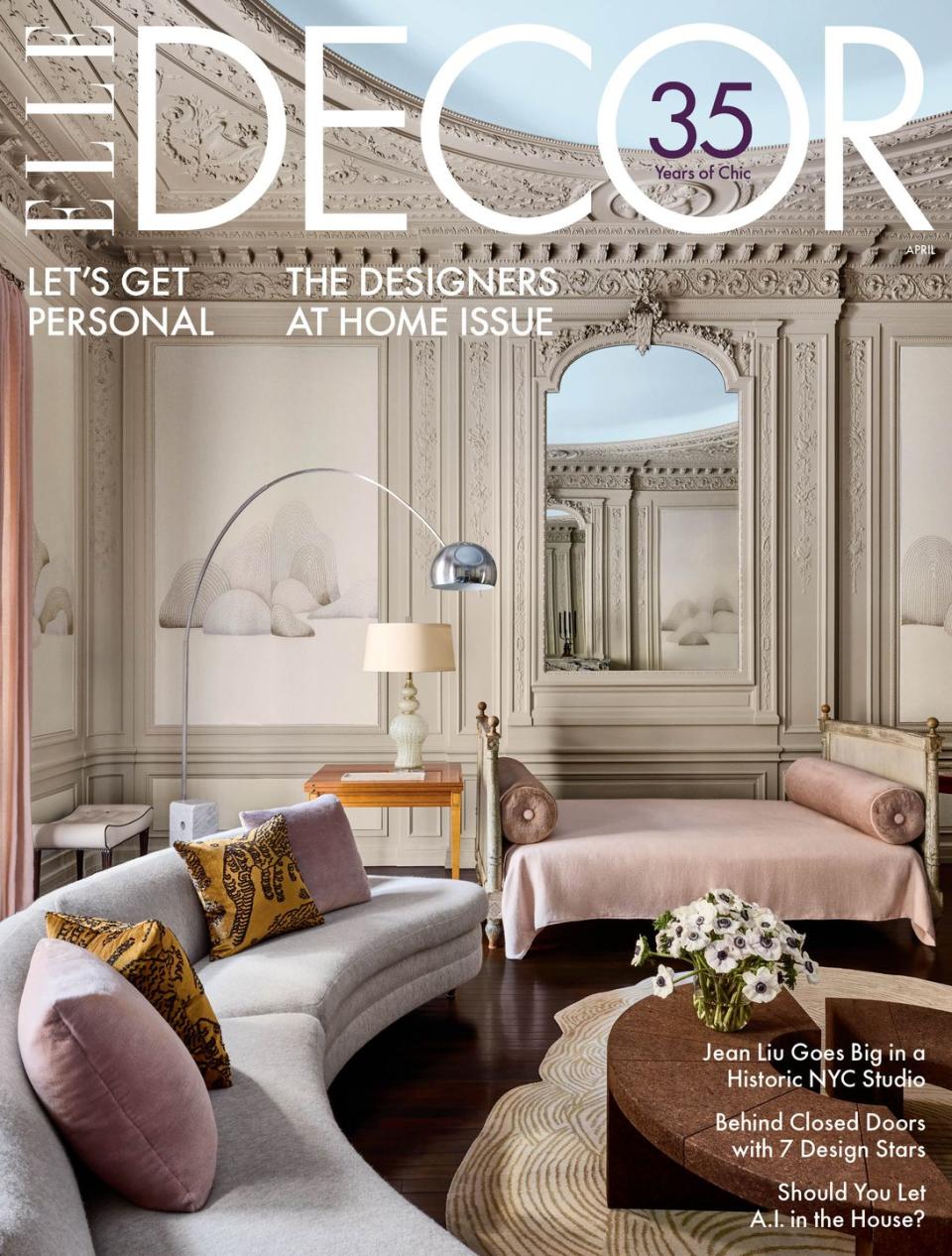
This story originally appeared in the April 2024 issue of ELLE DECOR. SUBSCRIBE
You Might Also Like

